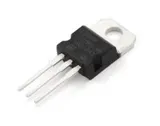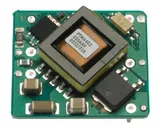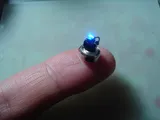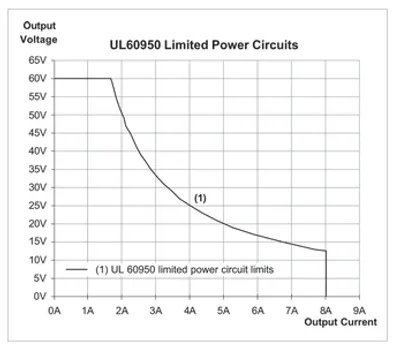Power Regulators
Power regulators aim to convert input voltages and currents into different output voltages and currents. There are many different ways of doing this, an each design has its benefits and advantages. The important parameters of all types of power regulators are efficiency, power levels, versatility, accuracy, noise, size and complexity.
If you want to drop low-to-medium voltage DC (3-60V) down to a lower DC voltage, and you don’t require large currents (<1A), can dissipate a large amount of heat easily or want low-noise voltage rails, look at the Linear Regulators page. If you want to do the same thing but do want large currents and/or want it to be efficient, or are wanting to increase the voltage, have a look at the Switch-Mode Power Supplies (SMPS) page. If you also need isolation, have a look at the Isolated Switch-Mode Power Supplies page.
If you want to increase the voltage and have really low current requirements, Charge Pumps might be what you’re after. If you want to convert 110-240VAC mains straight down to 3-24V low-voltage DC, have a look at the Off-line Switchers page.
Terminology
| Term | Description |
|---|---|
| Boost converter | A DC/DC converter topology which converts an input voltage into a higher output voltage. |
| Buck converter | A DC/DC converter topology which converts an input voltage into a lower output voltage. |
| Controller | A power conversion device that requires a external switch (typically a MOSFET). |
| Converter | A power conversion device that has an integrated switch (typically a MOSFET). |
| Cuk converter | A DC/DC converter topology which converts an input voltage into either a higher or lower output voltage. A Cuk converters output voltage is opposite in polarity to it’s input voltage (which is a disadvantage in most cases). |
| Down Conversion | Converting an input voltage into a lower output voltage. |
| Ripple | Used when talking about voltages and currents, it is the absolute or percentage change in voltage or current (max - min) over an operating cycle. You typically don’t want more than 20% ripple current through an inductor (w.r.t. it’s average current). |
| SEPIC | SEPIC (single-ended primary inductance converter) is a DC/DC converter topology similar to a buck-boost, which converts an input voltage into either a higher or lower output voltage. |
| Synchronous rectification | When the diode in a simple DC/DC converter is replaced with a switched MOSFET to improve efficiencies. Synchronous rectification allows DC/DC converter to climb above 90% efficiency in ideal situations. |
| Topology | The type of design/technology of the converter (e.g. a buck converter is one type of topology, while a boost converter is another). |
Topology Summary
DC/DC Converters And Controllers
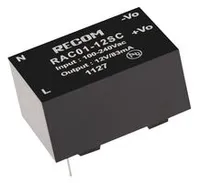
DC/DC converters and controllers are ICs which contain all of the logic and most of the passive componentry that makes up a switching power converter. When the industry talks about a DC/DC converter, they are talking about a chip which has an integrated switch (usually a MOSFET). When they talk about a DC/DC controller, they are talking about a chip which requires an external switch.
Most DC/DC converters and controllers require at least an external input capacitor, switching inductor, and output capacitor. Some however, like Linear Technology uModule range, have the inductor/capacitors built in also. These tend to be rather expensive!
Two important patents in the history of DC/DC converters are patent US3040271 and US4097773.
DC/DC converters are also used to charge batteries from solar panels. In this case, they are operated in an unusual fashion, because you want to regulate the input voltage to what provides maximum power extraction from the solar panel, rather than regulating the output voltage. Sometimes AC/DC power supplies are called LPS, which is an acronym for “limited power supply”. This term is related to the IEC60950-1 standard.
Efficiencies
The efficiency of DC/DC converters can be as high as 96-98%! You will see a figure like this quoted in most DC/DC converter IC datasheets. However, this efficiency only applies when the converter is operating at one specific point (the right input voltage, output voltage, load current, and temperature). Your own personal design will most likely be using the converter at a variety of different operating points, which may or may not include the one for maximum efficiency. When in actual use over a range of operating conditions, an average of about 80% efficiency is common from a good DC/DC converter. Only use this rating for comparing the quality of one DC/DC converter against another.
Burst Mode
DC/DC converters can extend their efficient operating current range by enabling the converter to operate in what is called a “burst” mode at low currents. When a converter is in this mode, it provides a burst of pulses to power the output until the output voltage climbs over a set threshold, turns off, and doesn’t turn back on again until the load voltage drops below a certain threshold. This turns out to be more efficient than continuous mode at low currents, but also increases the total noise radiated from the DC/DC converter. Most converters that employ this technique have a way of forcing the converter to stay in fixed frequency mode to reduce noise, which is useful for when powering devices such as GPS ICs.
Current Sharing
You can balance current-sharing between two similar power supplies by adding in-line resistance to each of power supply outputs, before connecting them together. Normally power resistors are required (>= 5W), and resistances between 1mΩ and 1Ω are used. Basically, you want to choose the largest resistance that at maximum current won’t overheat, and won’t drop to much voltage so that the load does not operate correctly. I have used this technique successfully for the Luxcity UV Tonic project to current-share between two computer power supplies that were driving the 64 solenoids.
A great technical article on current sharing can be found at http://powerpartners-inc.com/wp-content/uploads/2018/08/Load_Sharing_Considerations.pdf.
Buck-Boost Converter
A buck-boost power converter is a power supply which can produce an output voltage which can be both higher or lower than the input voltage. A buck-boost converter is similar to a SEPIC converter. Buck-boosts are not used unless an output voltage which could be both lower and higher than the input voltage is specifically required, as usually a sole buck or boost converter is cheaper, has a lower part count, and is more efficient. Maxim claims that a boost with linear regulator instead of a buck circuit can out perform a buck/boost in certain applications.
Joule Thieves
The team at RustyBolt has experimented with plenty of different Joule thief designs, and documented the results well on their website.


